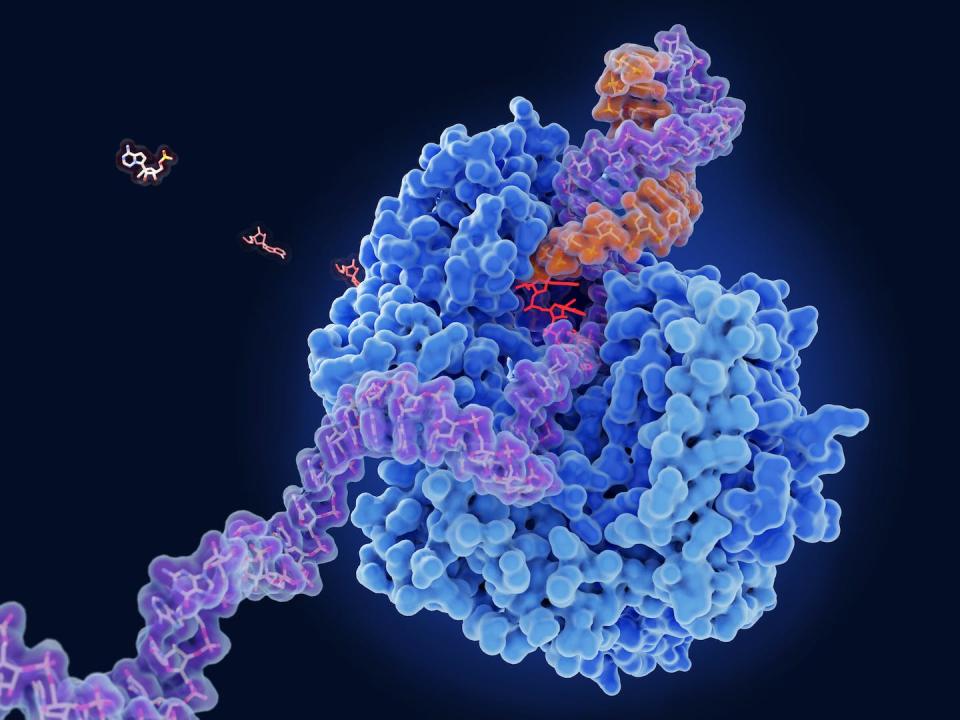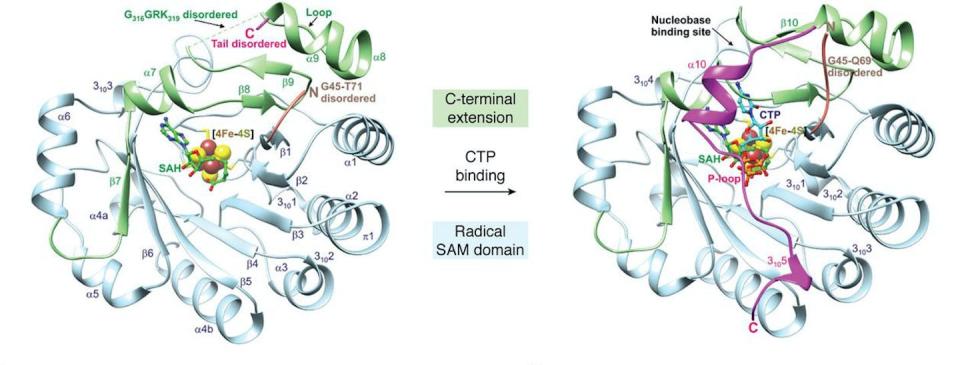Antiviral medicine are typically thought of to be a twentieth century invention. However latest analysis has uncovered an surprising side to your immune system: It could possibly synthesize its personal antiviral molecules in response to viral infections.
My laboratory research a protein that makes these pure antiviral molecules. Removed from a contemporary human invention, nature advanced cells to make their very own “medicine” because the earliest protection towards viruses.
How antivirals work
Viruses haven’t any unbiased life cycle – they’re utterly depending on the cells they infect to produce all of the chemical constructing blocks wanted to copy themselves. As soon as inside a cell, the virus hijacks its equipment and turns it right into a manufacturing unit to make a whole lot of recent viruses.
Antiviral medicine are molecules that inactivate proteins important to the functioning of the virus by exploiting the elemental variations in the way in which that cells and viruses replicate.
One key distinction between cells and most viruses is how they retailer their genetic info. All cells use DNA to retailer their genetic info. DNA is a protracted, chainlike molecule constructed from 4 totally different chemical constructing blocks, every representing a distinct “letter” of the genetic code. These constructing blocks are related by chemical bonds in a head-to-tail vogue to provide strings of tens of millions of letters. The order of those letters spells out the genetic blueprint for constructing a brand new cell.
Many viruses, nevertheless, retailer their genetic info utilizing RNA. RNA is constructed from a series of 4 chemical letters, similar to DNA, however the letters have barely totally different molecular buildings. RNA is single-stranded, whereas DNA is double-stranded. Viral genomes are additionally a lot smaller than mobile genomes, usually only some thousand letters lengthy.
When a virus replicates, it makes many copies of its RNA genome utilizing a protein referred to as RNA polymerase. The polymerase begins at one finish of the present RNA chain and “reads” the string of chemical letters separately, choosing the suitable constructing block and including it to the rising strand of RNA. This course of is repeated till your complete sequence of letters has been copied to kind a brand new RNA chain.
One class of antiviral medicine interferes with the RNA copying course of in a crafty approach. The top-to-tail building of the RNA chain requires every chemical letter to have two connection factors – a head to hook up with the earlier letter and a tail to permit the next letter to be added on. These antivirals mimic one of many chemical letters however crucially lack the tail connection level. If the RNA polymerase errors the drug for the meant chemical letter and provides it to the rising RNA chain, the copying course of stops as a result of there may be nothing to connect the subsequent letter to. For that reason, such a antiviral drug is named a chain-terminating inhibitor.
Viperin as antiviral producer
Beforehand, researchers thought that chain-terminating antiviral medicine had been strictly a product of human ingenuity, developed from advances in scientific understanding of viral replication. Nonetheless, the invention {that a} protein in your cells named viperin synthesizes a pure chain-terminating antiviral has revealed a brand new aspect of your immune system.
Viperin works by chemically eradicating the tail connection level from one of many 4 RNA constructing blocks of a virus’s genome. This converts the constructing block right into a chain-terminating antiviral drug.
This technique has proved to be extremely efficient for treating viral infections. For instance, the COVID-19 antiviral remdesivir works on this approach. A viral RNA polymerase has to affix collectively many hundreds of letters to repeat a virus’s genome, however an antiviral drug has to idiot it solely as soon as to derail its copying. An incomplete genome lacks the required directions to make a brand new virus and turns into ineffective.

Furthermore, though cells even have their very own polymerases, they by no means replicate RNA like viruses do. This probably permits chain-terminating antiviral medicine to selectively inhibit viral replication, lowering undesirable unwanted side effects.
Clearly, viperin doesn’t absolutely shield towards all RNA viruses – in any other case no RNA viruses would make you sick. Plainly some viral RNA polymerases, akin to these in poliovirus, have advanced to discriminate towards the antiviral molecules that viperin synthesizes and blunt their impact. Nonetheless, viperin is just one arm of your immune system, which incorporates specialised cells and proteins that shield you from an infection in different methods.
Historic antivirals
Scientists found viperin about 20 years in the past whereas trying to find genes that activate in response to viral infections. Nonetheless, determining what viperin truly does proved very difficult.
Viperin’s operate was notably puzzling as a result of it resembles an historic group of proteins referred to as radical SAM enzymes which can be normally present in micro organism and molds. Notably, radical SAM enzymes are extraordinarily uncommon in animals. Publicity to air quickly inactivates them, and researchers thought they doubtless didn’t work in folks. It’s nonetheless unclear how viperin avoids inactivation.

Researchers had been clued in to viperin’s operate once they seen that the gene coding for viperin is subsequent to a gene concerned in synthesizing considered one of RNA’s constructing blocks. This commentary led them to look at whether or not viperin may modify this RNA constructing block.
Following this discovery, researchers recognized viperinlike proteins throughout all kingdoms of life, from historic micro organism to trendy crops and animals. This meant that viperin is a really historic protein that advanced early in life, most likely properly earlier than the arrival of multicellular organisms – as a result of even micro organism should combat viral infections.
As extra complicated life types advanced, viperin was retained and built-in into the complicated immune techniques of contemporary animals. Thus, this most lately found arm of your immune system’s defenses towards viruses is probably going probably the most historic.
This text is republished from The Dialog, a nonprofit information web site devoted to sharing concepts from tutorial consultants. The Dialog is reliable information from consultants. Attempt our free newsletters.
It was written by: Neil Marsh, College of Michigan.
Learn extra:
Neil Marsh receives funding from the Nationwide Institute of Common Medical Sciences to assist his laboratory’s work on viperin.




